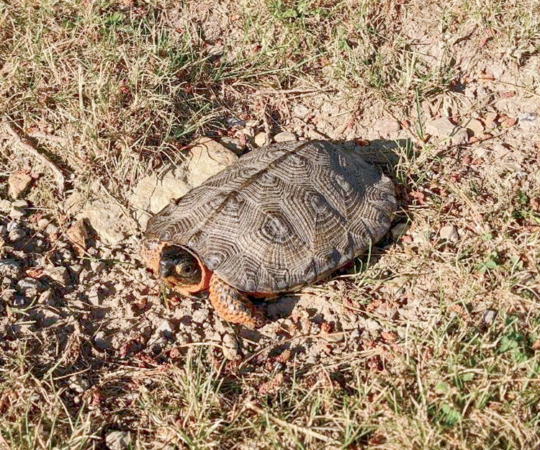Like a lot of people who live out here in rural Pennsylvania, I enjoy seeing the great variety of wildlife that roam our woods and fields. But all too often, that wildlife chooses to cross a road with fatal results.
Unlike a lot of other critters, turtles and snakes, unfortunately, are often too slow to cross a highway and become likely targets. I suspect many drivers carefully avoid turtles because they look more like a big rock that could cause damage, but snakes are often feared and despised and probably become targets.
As a kid growing up, one of my favorite hobbies was catching snakes, so even now, when I see one crossing the road, I try to pull over and remove it before it gets run over. I do the same for turtles, and this past couple of weeks, I’ve spotted a couple of candidates who needed assistance.
Pennsylvania actually has 14 different species of turtles roaming about. Turtles are the oldest living reptiles. Most turtles will spend much of their time either in or near water, but some species will also spend time in woodlands and fields. Unless you are looking for them in a bog or pond, we probably don’t see them much, but in spring and early summer, females are often on the move in search of nesting sites.
I don’t have space to look into all of our turtles, but there are several that seem to be seen more often, including the Painted Turtle, Wood Turtle, Woodland Box Turtle, and the most notorious — the Snapping Turtle.
The Snapping Turtle is the largest, with a carapace or shell about 12-14 inches long. Many people would say the snapper is ugly in both appearance and disposition. They have very powerful jaws; as the name implies, they will not hesitate to snap and grab whatever is available. While it’s a lot of work cleaning and preparing one, it’s also true that the snapper can be turned into some fine dining; it makes a fine turtle soup and chowder. By the way, you must have a current Pennsylvania Fishing license to take a Snapping Turtle.
Last week, as I was getting into my truck to pull out of my driveway, I saw a big “rock” lying in the middle of the road. The “rock” turned out to be a Wood Turtle trying to make its way across the highway. I quickly moved the turtle to a safe place over in the nearby woods. The Wood Turtle has a unique 7-8-inch-long shell, with each scute in the form of a pyramid rising upward in a series of concentric grooves and ridges. The skin on the neck and legs is reddish orange. Wood turtles are commonly found in woods and fields, so seeing one crossing the road in farm country isn’t all unusual.
A couple of other turtles often seen are the Painted Turtle and the Eastern Box Turtle, with shells about 4-6 inches in length. The Box turtle has a high carapace and is somewhat domed in shape. Black and brown with yellow, orange, and olive markings show up on the shell. These turtles are often found in the same type of terrain as the Wood Turtle. The Painted Turtle is more apt to be seen in or near water. The head has bright yellow stripes, and the legs, neck, and tail have yellow and red stripes, setting it apart from other turtles.
Well, if we already hadn’t had enough wildlife to watch while driving down the road, now that summer is here, we have to add turtles and snakes to the list.




